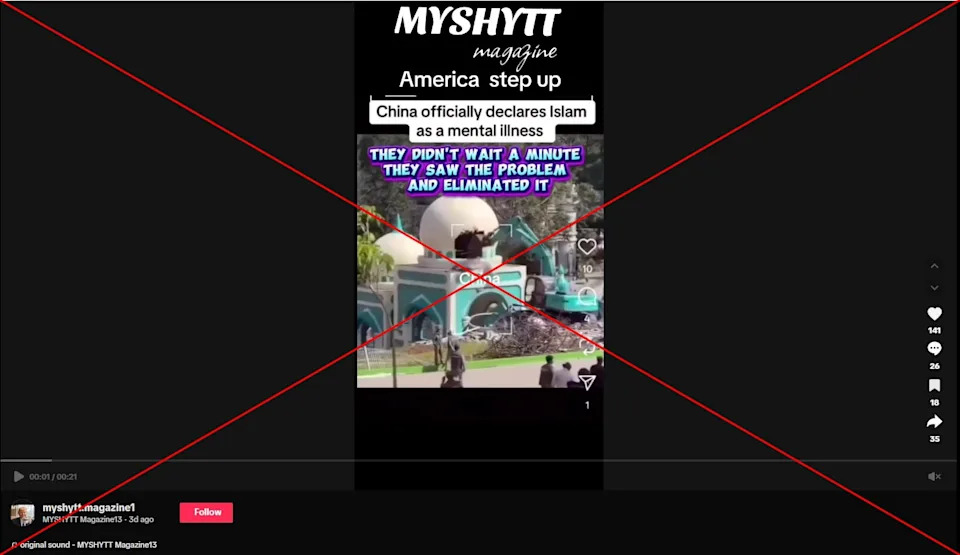A video that recently circulated online, depicting an excavator demolishing a building resembling a mosque, has been misidentified as evidence of China’s treatment of Muslim communities. In reality, the footage shows the demolition of an illegal structure at Hibisc Fantasy Park in West Java, Indonesia. The clip, which was shared on October 6, 2025, included a misleading caption claiming that China had declared Islam a mental illness.
The 45-second video features an excavator tearing down a dome-shaped building, leading to false assumptions about the location and context. This misrepresentation is particularly concerning given ongoing scrutiny regarding China’s treatment of its Muslim population, particularly the Uyghurs in Xinjiang. Rights groups have reported that over a million Uyghurs have been detained in facilities where allegations of violence and abuse are rampant. Beijing, however, asserts that these centers are voluntary training facilities that have since closed.
The video has circulated with similar claims since March 2025, appearing in multiple languages, including English, Greek, and Portuguese. This pattern of misinformation has previously involved similar footage mistakenly attributed to India, which has also been debunked by AFP.
A reverse image search conducted on keyframes from the video revealed a higher-quality version posted on TikTok on March 8, 2025. The Indonesian caption stated: “The second day of the dismantling of the Hibisc tourist attraction in Puncak Bogor.” Additionally, a disclaimer in English clarified that the structure was an “Indian style building in a fantasy park,” not a mosque.
Hibisc Fantasy Park, located in Puncak, has been permanently closed since March 2025. The closure followed tragic flooding that resulted in three fatalities. Dedi Mulyadi, the Governor of West Java, ordered the demolition of unlicensed structures at the park, citing the development’s role in disrupting local forest cover, which contributed to the flooding.
Archived images of the park available on Google Maps confirm that the structures shown in the circulating video correspond to those seen in the park prior to its closure. The dissemination of this video highlights the urgent need for accurate information surrounding sensitive topics related to religious communities and international relations.







